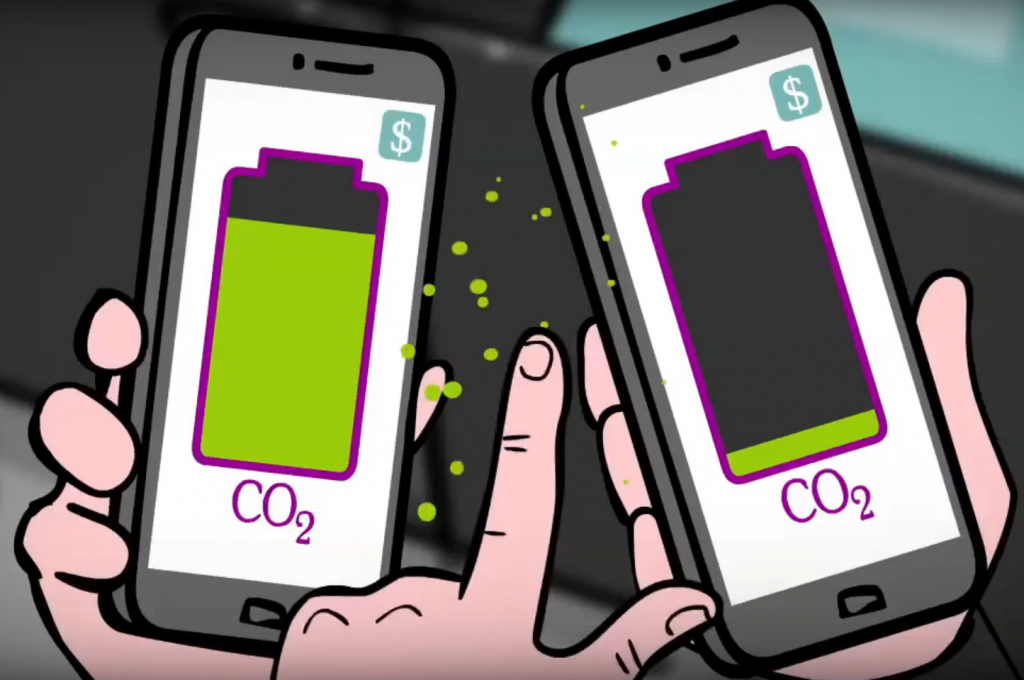Climate goals, e.g. keeping global warming within the Paris Agreement 2015 2.0°C limit, require simultaneous action at the level of individual citizens, at local levels, in business and industry, and government. In this country, where high emissions levels are the norm, citizens find personal decisions to forego high emissions purchases or activities hard, because the impact feels insignificant and the number of others doing the same seems small. This is the ‘free rider’ problem, and personal carbon trading is a scheme that tackles it directly.
There are many hurdles to get local people and governments to accept and implement such a proposal, but while the arguments for the proposal range across multiple specific areas of contention, they are not, at least as an economic concept, complicated. If one gives a group of people a carbon budget, divides up the budget equally among participants and allows trading between those with ‘high’ footprints and ‘low’ footprints, all are incentivised to lower their emissions.
The EcoCore Carbon Accounts policy uses this concept within a framework that turns personal carbon allowances into a national carbon currency. This article describes the most significant economic considerations of personal carbon trading.
Externality
Climate change is already having an impact, much of which is increasingly irreversible. The IPCC stated in their 2023 report[1]The United Nations Intergovernmental Panel on Climate Change (IPCC)’s 2023 sixth assessment review (AR6) of the current state of the climate is the largest single collaboration of climate … Continue reading that:
Climate change has already led to widespread adverse impacts and related losses and damages to nature and people. Vulnerable communities who have historically contributed the least to current climate change are disproportionately affected.
UN IPCC 2023 AR6
Externalities occur when production or consumption impacts third parties not directly related to the economic transaction. Externalities can either be positive or negative. For example, just driving into a city centre will cause external costs of additional pollution and congestion to those living in the city.
Most of the impacts of today’s carbon emissions will fall in the future. Today’s young people will feel the impact and loss most, even if CO2 emissions were completely halted immediately. The potential scale of these impacts, if little action is taken today, is vast. The straight-forward but challenging economic solution is to resolve the negative externality, by requiring individuals today to consider the impact their actions will have not only across countries, communities and cultures, but also temporally, on the societies of 2030, 2050, 2100 and beyond.
That is a problem for future generations, but there is much evidence that society can mitigate the problems now, and still thrive in the present. Personal carbon trading will internalise this – creating accountability today for the damage caused in the future.
It brings the Marginal Private Benefit (MPB) of emissions into line with the Marginal Social Benefit (MSB) and emissions are lowered to a level that achieves ‘internalisation’, i.e. the problem is solved. A person chooses options in daily life where the emissions impacts are fully accounted for. The cash price and the carbon price are attractive because they are ‘worth it’ in comparison with the alternatives, without putting our or future generations in jeopardy.
By having a fixed ceiling of aggregate emissions, and an initial carbon quota for each person, those with lower carbon footprints can sell their excess emissions to those willing to pay to emit more. Firstly, despite the negative gut feeling that this allows someone to buy their way out of their responsibilities, this incentivises carbon buyers to reduce their emissions to avoid the payments required, and secondly, it allows them maintain their lifestyle to a degree of their own choosing. Rather than banning damaging activities through strict legislation and risking the ire of those with sensitivities around their personal liberty, this will reduce emissions while maintaining individual flexibility and choice.
Carbon Price
Establishing a carbon price is a challenge that policymakers, businesses and consumers face – how much should we pay to emit GHGs? In real life this might be done in a number of ways.
- What tax should we pay on fuel?
- How much should international travel cost us?
- What surcharge should be put on GHG-intensive meat and dairy?
- Should we penalise fossil fuel-derived energy and subsidise renewables?
There are countless examples where moral hazard and information barriers make it difficult to reach the correct answer, i.e. an acceptable price that achieves the required level of emission reduction. This concept has been discussed in detail by economists trying to establish the ‘social cost of carbon’ and has introduced complex discussions about the appropriate discount rate to use in long-term social contexts.
Personal carbon trading simplifies the problem. The question we must ask instead is ‘What quantity of emissions is acceptable?’, or in other words, ‘What level of aggregate emissions remains within the Paris Agreement limits?’. From there, we work backwards, determining the initial carbon budget to give each person in the scheme, after which participants can buy more if needed or sell their excess.
A carbon price is determined over time, by markets. As people trade, they show their willingness to pay for additional emissions. If, over time, people value emissions more highly, demand for emissions will rise, and so the price of the carbon traded will increase. Importantly, all this can happen whilst still controlling total emissions.
The existence of carbon as a virtual currency as it is used within the scheme to pay for products and services leads to two hugely important pieces of information:
- Every product and service must be priced in carbon – a ‘carbon label’ – for sale to participants, who will in ceteris paribus choose the lower carbon price
- Every purchase or sale of the carbon tokens will influence the cash price of carbon, allowing producers, manufacturers and service providers to judge the costs of all the various decarbonisation options against the projected impacts on their sales

Redistributive
Higher income individuals generally emit more than lower income individuals, and it is developed countries, with high average incomes per capita, that have contributed to the bulk of climate change. Simply, they can afford to ‘do’ more. They travel and purchase goods from further afield.
With personal carbon trading, individuals are each initially allocated the same carbon budget. The purchase of emissions from low emitting, lower income individuals by high income individuals might be considered controversial – the idea that the rich can ‘buy’ their way out of being green. However, with an aggregate limit on overall emissions, there will always be a point where the price they must pay exceeds the benefit they derive.
Even if the personal carbon trading scheme includes the world’s richest billionaire who has the ability to pay any price, the availability of carbon on the market is still finite. Lucky is the seller who sells the last spare kilo of carbon to that billionaire for an astronomical price, but it will not increase the final quantity of emissions, and it will result in significant wealth transfer.
An income redistribution will occur where the rich pay the poor for their extra emissions, an added benefit for policymakers looking to reduce both income inequality and the inequality between those emitting and those impacted.
Innovation
Innovation that reduces carbon emissions produced by business and industry is encouraged through consumer choice. Goods and services in a personal carbon trading scheme will cost the participants less carbon from their carbon budgets if the products cause lower emissions.
For example, imagine two companies – Springfield Dairies and Muddy Pastures – selling almost identical milk. If Springfield develops a technology that enables milk to be refrigerated using less energy, the carbon footprint of the milk it sells will be lower. So Springfield will put a higher cash price on its milk to pay for the investment, but the milk’s carbon price will fall.
If the carbon price is currently low, then this might not be advantageous unless the cash price increase is only slight. Imagine though that climate impacts have recently become significantly more apparent to society, then the personal carbon trading scheme will reduce the allowances given out, and the price of carbon traded between participants will rise. This will drive consumers to purchase lower carbon milk from Springfield Dairies, and stimulate both firms to seek more ways to reduce their emissions.
Behavioural Change
One of the hardest aspects of a green transition is driving behavioural change to create ‘green’ behaviours. A recent quote by the Centre for Climate Change and Social Transformation (CAST)[2]See the article at Centre for Climate Change and Social Transformation highlighted that ‘government intervention was essential to behaviour change’. Personal carbon trading ‘nudges’ individuals into more sustainable lifestyles not only through creating a cost for emissions but also by improving awareness. If individuals become aware of which of their activities have high footprints, they can choose which activities to change to suit their lifestyle, and will also better understand the impact of their actions.
With reduced information barriers, people will become more educated on the climate impacts of their consumption decisions. These ‘nudges’ could lead to a shift in social norms as individuals feel pressurised to reduce their carbon footprint. Some will reduce their emissions, some will buy less extra carbon, and some may even voluntarily retire the excess carbon in their carbon account.
This multiplier effect, where there is more demand for pro-environmental policies and actions in general as a result, is an added benefit compared with legislative or business level interventions that do not address individual consumer behaviours.
This article focuses on the economics rather than the practicality. Personal carbon trading will start at a local level within climate-conscious groups, but there is potential for such a scheme to have wider reach. Companies might ask employees to track and trade their carbon emissions for ‘Green Weeks’, for example.
The hope is that participants in EcoCore’s EcoCounts groups will act as a demonstration to the public of its attractiveness, as the economic concept is evidenced and the need for action becomes increasingly clear. The ultimate leverage would be realised by enrolling all of the nation’s citizens into the scheme within the framework of the Carbon Accounts concept. As ever, only the future can tell when the increasing climate jeopardy will be enough to push decision-makers to adopt such large-scale, extensive policies.
Interested? Read the full policy proposal here.
In 2017 the Finnish city of Lahti declared they would become carbon-neutral by 2025. Now they must get each citizen to reduce their annual carbon footprint…
Continue Reading How to Reduce the Carbon Footprint of a City by 25%
Personal Carbon Trading or PCT is a mechanism for increasing flexibility and efficiency in a carbon allowance or cap-and-trade scheme. It is a component in our…
References
| ↑1 | The United Nations Intergovernmental Panel on Climate Change (IPCC)’s 2023 sixth assessment review (AR6) of the current state of the climate is the largest single collaboration of climate scientists, with over 782 scientists and hundreds of contributing authors analyzing more than 66,000 peer-reviewed studies, spanning multiple working groups and special reports. It represents the most comprehensive scientific assessment of climate change currently available |
|---|---|
| ↑2 | See the article at Centre for Climate Change and Social Transformation |


